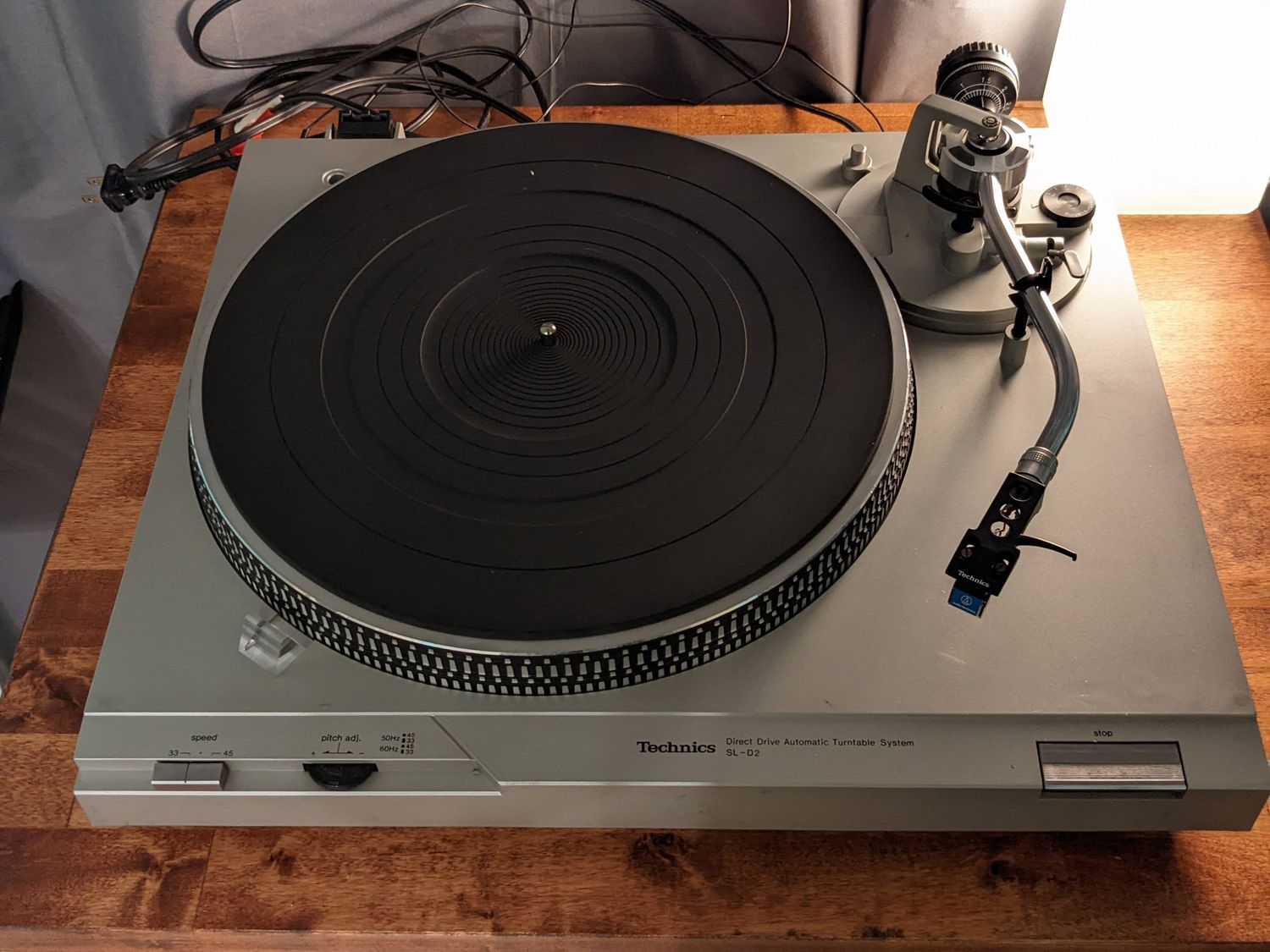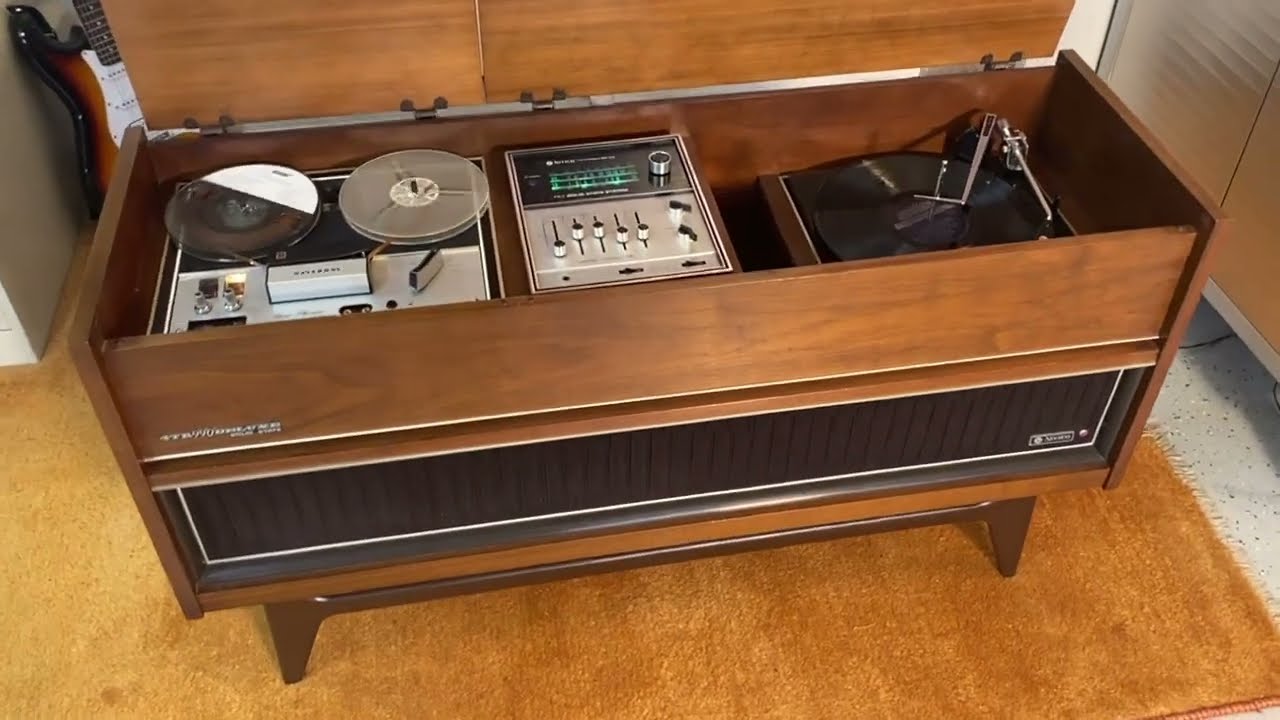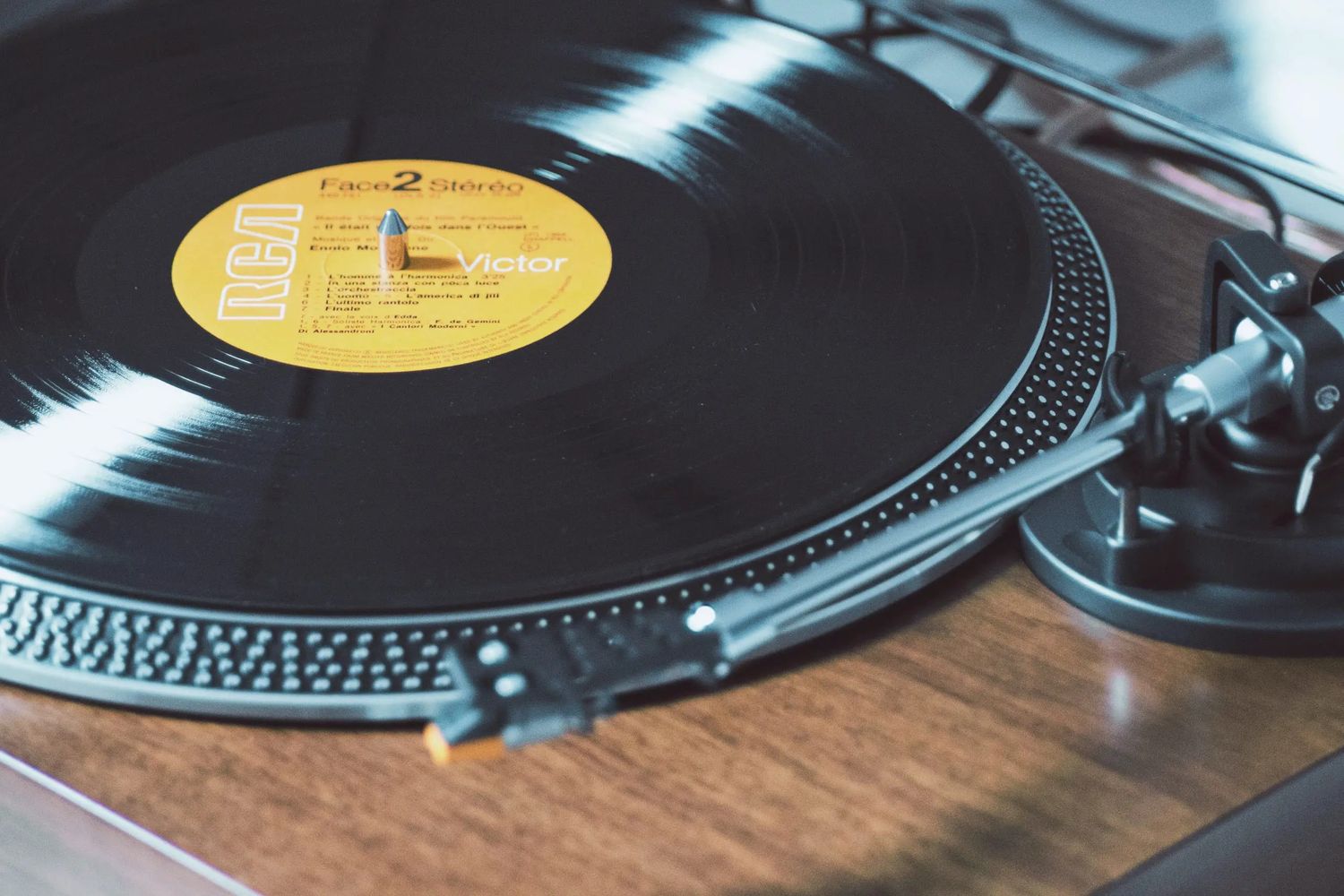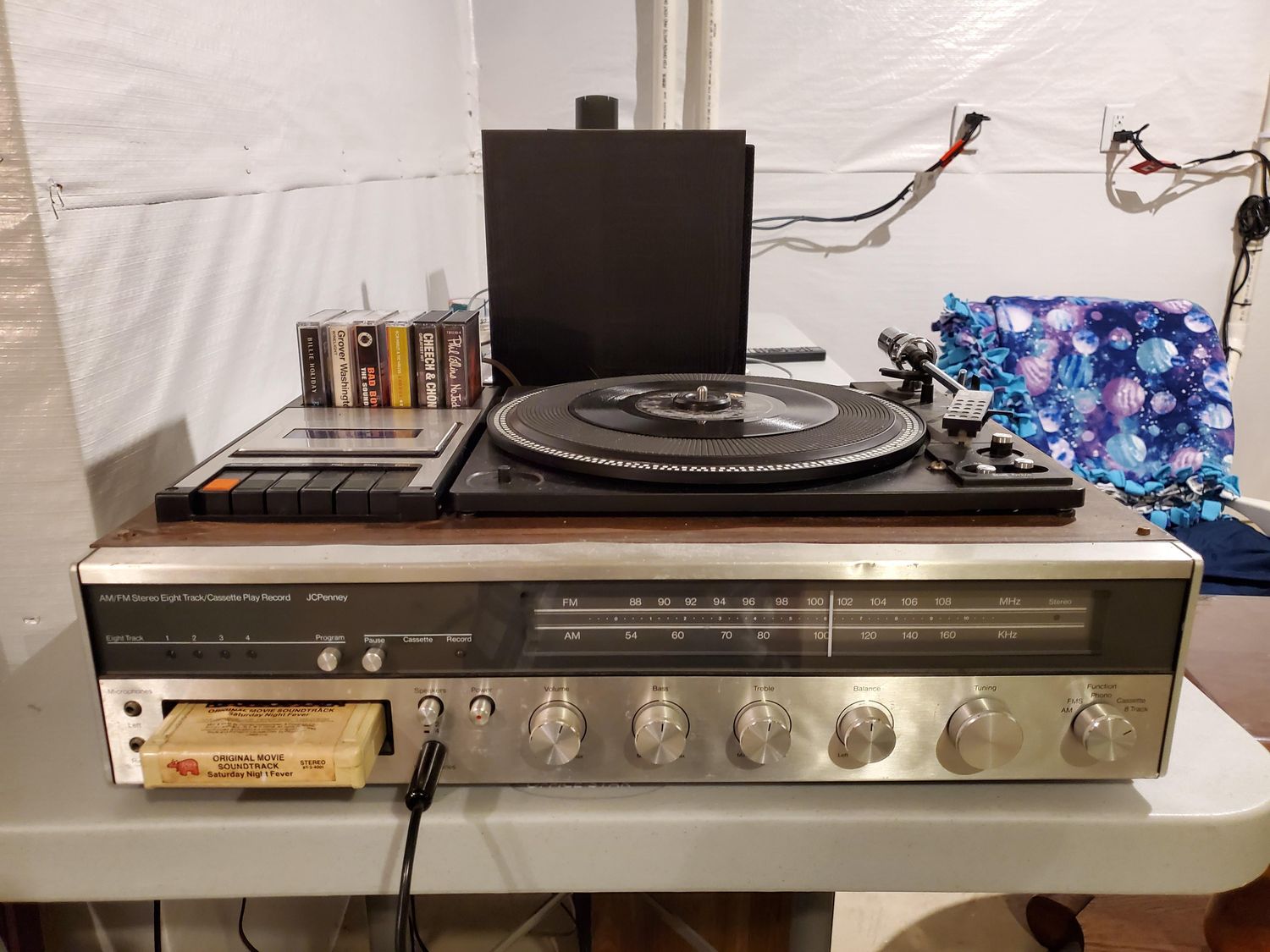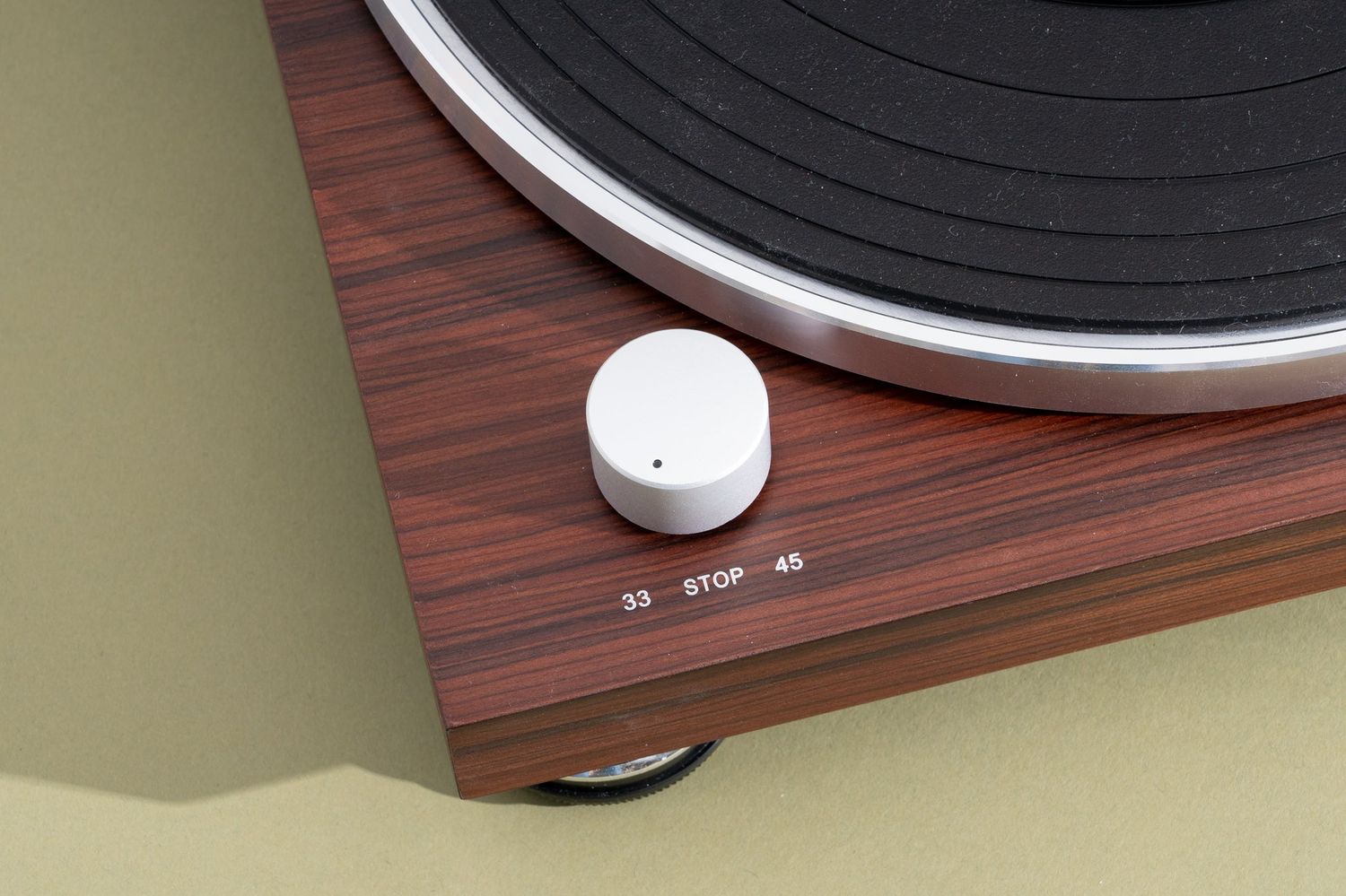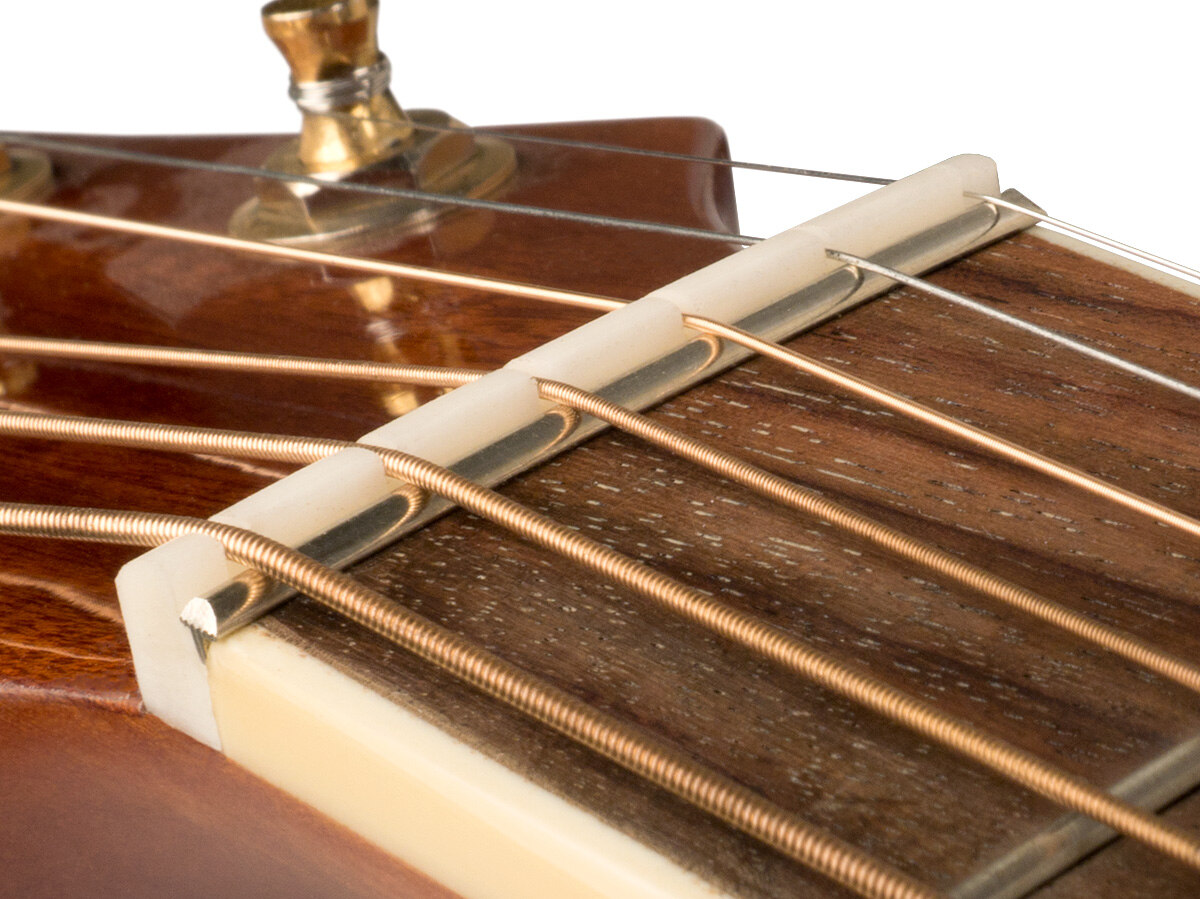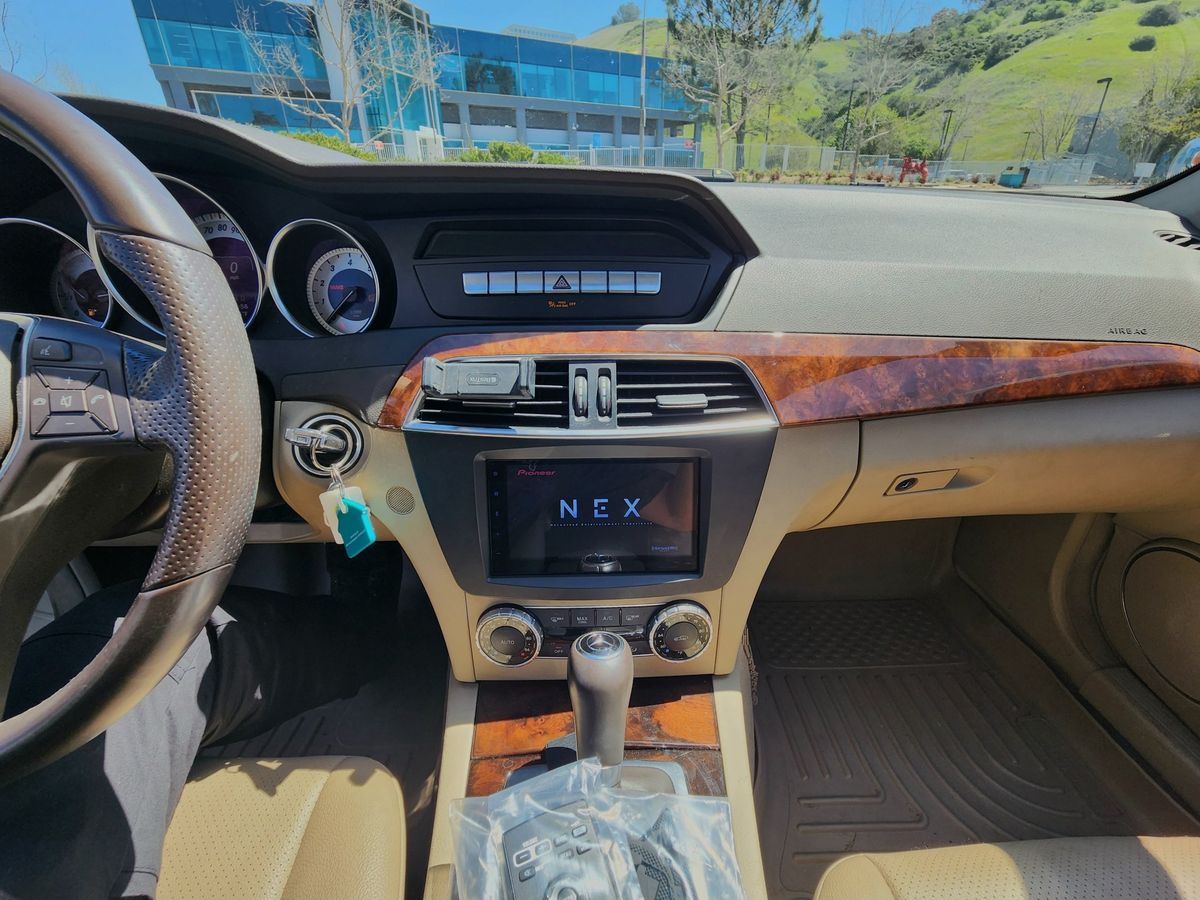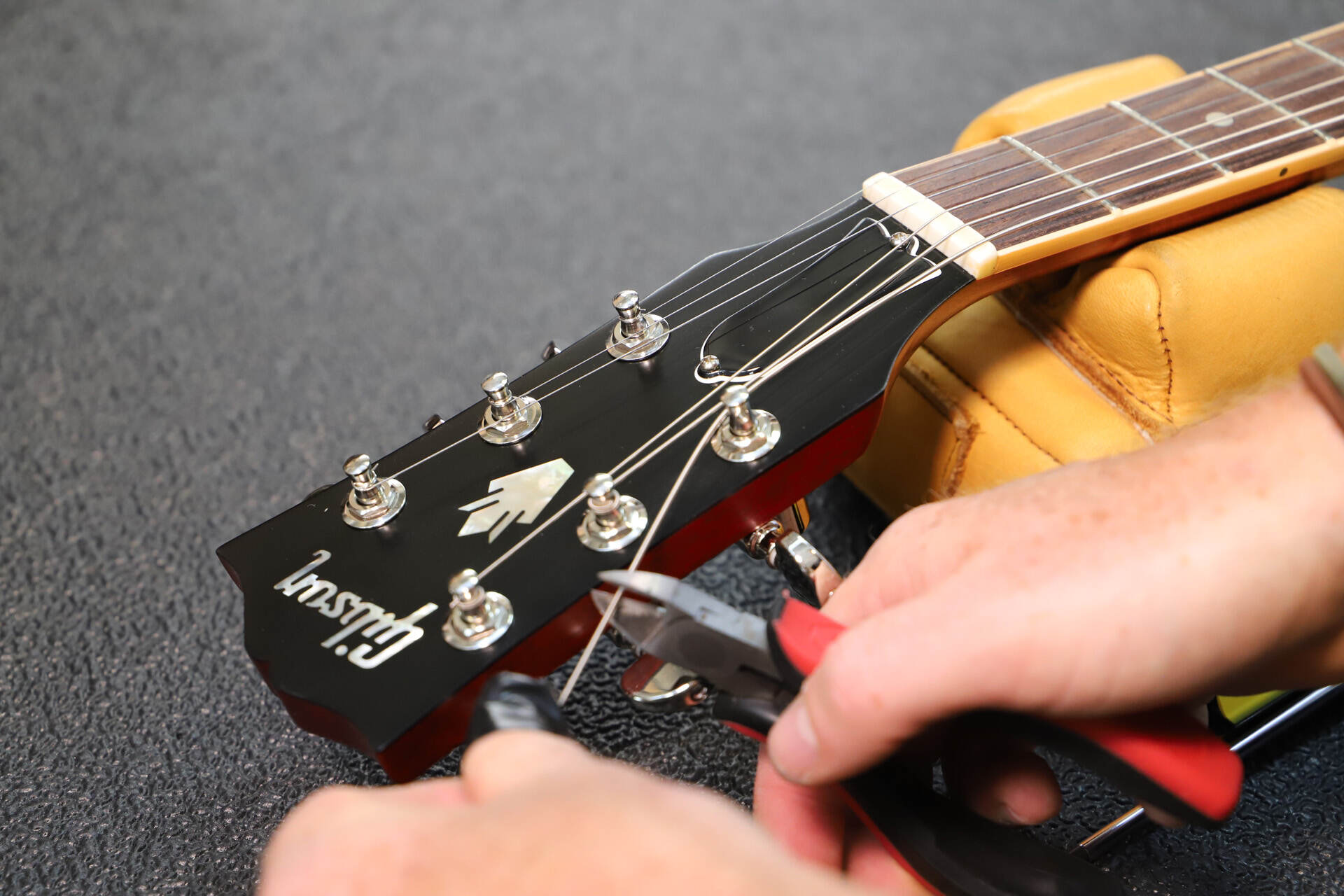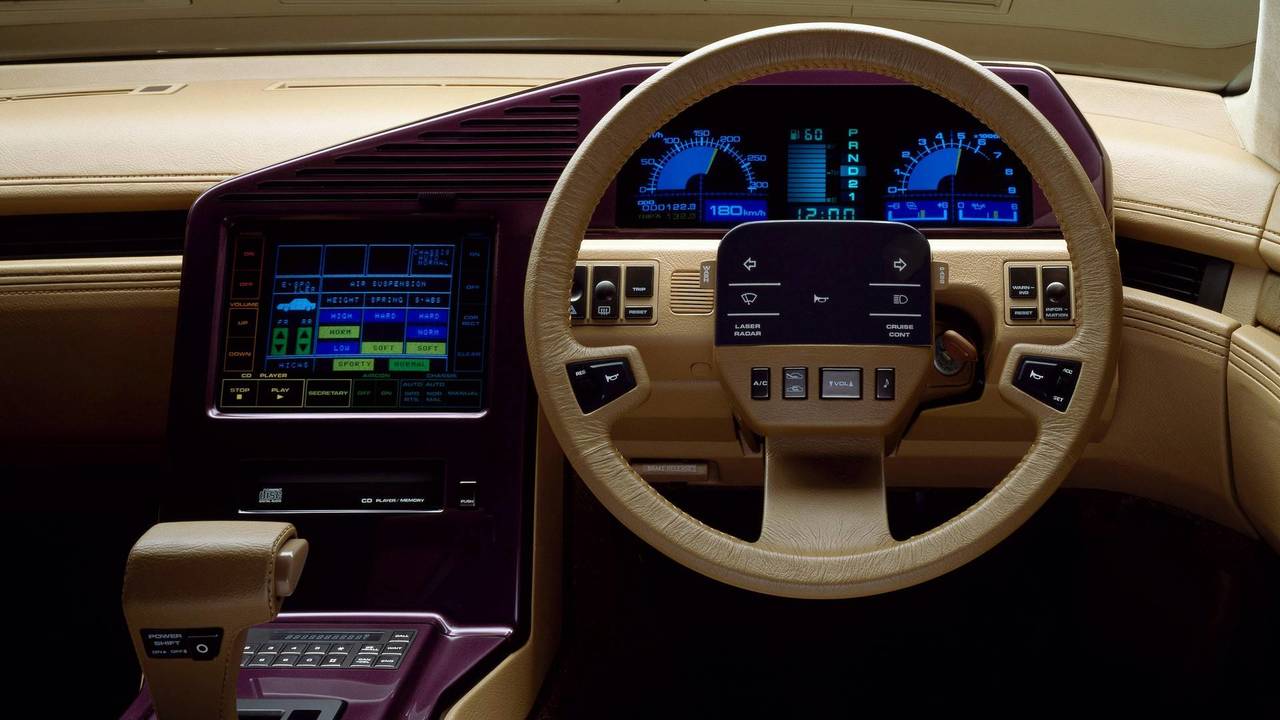Home>Devices & Equipment>Turntable>When To Replace The Cartridge On My Turntable


Turntable
When To Replace The Cartridge On My Turntable
Modified: January 22, 2024
Find out when it's time to replace the cartridge on your turntable for optimal performance. Discover the signs and steps to ensure great sound quality.
(Many of the links in this article redirect to a specific reviewed product. Your purchase of these products through affiliate links helps to generate commission for AudioLover.com, at no extra cost. Learn more)
Table of Contents
Introduction
Welcome to the world of turntables, where the nostalgic sound of vinyl meets modern technology. Whether you’re a vinyl enthusiast or a casual listener, a crucial component of any turntable is the cartridge. The cartridge is responsible for converting the vibrations of the stylus as it tracks the grooves of a record into electrical signals, which are then amplified and played through your speakers. However, like any other component, cartridges undergo wear and tear over time, and knowing when to replace them is essential to maintain optimal sound quality.
A turntable cartridge consists of a stylus (also known as a needle) and a housing that holds the stylus and the internal components. The stylus is the part that makes contact with the record’s grooves, translating the physical movements into analog sound waves. Over time, the combination of friction and the delicate nature of vinyl can cause the stylus to wear down, resulting in a decrease in sound quality.
Knowing the signs of a worn-out cartridge is crucial in order to enjoy your vinyl collection to its fullest potential. It’s important to consider various factors, such as the frequency of use, record care and maintenance, and your overall listening experience. By paying attention to both visual and audible indicators, you can determine when it’s time to replace your turntable cartridge and ensure that you’re getting the best possible sound reproduction.
In this article, we will delve deeper into the signs of a worn-out cartridge and explore the factors you need to consider when deciding whether it’s time to replace it. We will cover everything from the frequency of use and record care to the visual and audible indicators that can help you determine the right time for a cartridge replacement. So, let’s dive in and discover how to keep your turntable sounding its best!
The Basics of Turntable Cartridges
Before we discuss when to replace a turntable cartridge, it’s important to understand the basics of how cartridges work and their role in the overall sound reproduction process.
A turntable cartridge is a small device that sits at the end of the tonearm of a turntable. It houses the stylus, which is the part of the cartridge that makes direct contact with the grooves of a vinyl record. The stylus is typically made of a diamond or a precious gemstone, known for their durability and ability to accurately trace the record’s grooves. It converts the physical movements of the grooves into electrical signals, which are then sent through the tonearm and amplified by the phono preamp and amplifier before being played through speakers or headphones.
Cartridges come in various types, including moving magnet (MM) and moving coil (MC) cartridges. The main difference between the two is how the stylus is attached to the internal components of the cartridge. MM cartridges are more common and affordable, making them a popular choice for many turntable enthusiasts. On the other hand, MC cartridges are known for their higher fidelity and accuracy, but they are generally more expensive.
When it comes to cartridge maintenance, proper alignment is crucial. The cartridge needs to be aligned properly with the grooves of the record to ensure accurate tracking and reduce unwanted noise. Cartridge alignment tools and alignment protractors can help with this process, ensuring optimal performance and longevity of the cartridge.
It’s worth mentioning that while some turntables come with a pre-installed cartridge, many turntables allow you to upgrade the cartridge for improved sound quality. Upgrading the cartridge can enhance the overall listening experience by providing better tracking, lower distortion, and improved frequency response.
Now that we have covered the basics of turntable cartridges, let’s move on to the signs that indicate it might be time for a replacement.
Signs of a Worn Out Cartridge
Like any other component in your turntable setup, cartridges can wear out over time. It’s important to be aware of the signs that indicate a worn-out cartridge, as this can significantly impact the sound quality of your vinyl records. Here are some key signs to watch out for:
- Tracking issues: One of the most common indicators of a worn-out cartridge is poor tracking. If you notice that the stylus is skipping or jumping across the record, or if it’s struggling to stay in the grooves, it’s likely time for a cartridge replacement. This can result in distorted sound and a loss of detail in the music.
- Excessive groove noise: As a cartridge wears down, it may not be able to effectively remove noise and distortion from the record’s grooves. This can result in an increase in surface noise, crackling, and pops that can be distracting and detract from the overall listening experience.
- Reduced high-frequency response: Over time, the stylus can become dull or damaged, leading to a reduction in high-frequency response. If you notice that the music lacks sparkle or clarity in the treble range, it could be a sign that the cartridge needs replacing.
- Deterioration in sound quality: One of the most telltale signs of a worn-out cartridge is a noticeable decline in sound quality. If you find that your records no longer sound as clear, dynamic, or vibrant as they used to, it’s likely that the cartridge is reaching the end of its lifespan.
- Uneven channel balance: If you detect a significant difference in volume or clarity between the left and right channels, it may indicate an issue with the cartridge. Uneven channel balance can affect the stereo imaging and result in an imbalanced listening experience.
It’s important to remember that these signs can also be attributed to other factors, such as a misaligned cartridge or a damaged stylus. Regular maintenance, including cleaning and proper alignment, can help prevent premature wear and tear. However, if you’ve ruled out other potential causes, and you’re still experiencing these issues, it’s likely time to replace your cartridge.
Now that we’ve discussed the signs of a worn-out cartridge, let’s delve into the various factors you should consider when deciding whether it’s time for a replacement.
Factors to Consider
When determining whether it’s time to replace your turntable cartridge, there are several factors you should take into consideration. These factors can help you make an informed decision and ensure that you’re getting the best possible sound quality. Let’s explore these factors:
- Frequency of use: How often you use your turntable can impact the lifespan of your cartridge. If you are a frequent listener, playing records on a daily basis, the cartridge is likely to wear out faster compared to someone who listens infrequently. Consider the number of hours you play records each week and take that into account when assessing the condition of your cartridge.
- Record care and maintenance: The condition of your vinyl records can also have an impact on the lifespan of your cartridge. If you have a large collection of well-maintained records, it may help prolong the lifespan of the cartridge. Conversely, records that are dirty, scratched, or warped can put additional strain on the stylus and the cartridge, leading to faster wear and tear.
- Listening experience: Pay attention to the quality of the sound you’re getting from your turntable. If you’re noticing a decline in sound quality, such as reduced clarity, dynamics, or frequency response, it might be an indication that the cartridge needs replacing. Ultimately, the goal is to enjoy your vinyl collection to its fullest, and a worn-out cartridge can hinder that experience.
- Visual inspection: Take a close look at the stylus under magnification. If you notice visible signs of wear, such as a worn-down or damaged diamond tip, it’s a clear indicator that the cartridge is reaching the end of its lifespan. Likewise, inspect the cartridge body for any visible signs of damage or wear, such as loose connections or cracks.
- Audible indicators: Listen for any audible indicators of a worn-out cartridge, such as increased distortion, lack of detail, or increased surface noise. If you’re consistently hearing these issues across multiple records, it’s likely that the cartridge is no longer performing optimally.
Considering these factors together can help you determine whether it’s time for a cartridge replacement. While there’s no hard and fast rule for when to replace a cartridge, it’s generally recommended to keep track of the factors mentioned above and replace the cartridge when you notice a significant decline in sound quality or performance.
Now that we’ve explored the factors to consider, let’s move on to discussing the process of replacing a cartridge.
Frequency of Use
The frequency at which you use your turntable plays a significant role in determining when to replace the cartridge. The more often you play records, the faster the cartridge will wear out. Here are some key points to consider regarding the frequency of use:
Hours of playback: Take into account the number of hours you spend playing records each week. If you are an avid vinyl enthusiast and play records for several hours every day, your cartridge will experience more wear and tear compared to someone who only listens occasionally. The constant friction between the stylus and the record grooves will gradually degrade the stylus, leading to a decline in sound quality over time.
Record rotation: Consider the size of your vinyl collection and how often you rotate through your records. Playing the same records repeatedly can contribute to faster cartridge wear, as the stylus is continually tracing the same grooves. If you have a large collection and regularly rotate through different records, this can help distribute the wear and prolong the lifespan of your cartridge.
Wear patterns: Pay attention to the wear patterns on your records. If you notice significant wear or groove damage on specific records, it may be an indication that the cartridge is not tracking properly. This can be caused by alignment issues or a worn-out stylus. In such cases, it’s essential to address the underlying issue and potentially consider a cartridge replacement.
Consider an upgrade: If you find yourself playing records for countless hours each week and are serious about obtaining the best possible sound quality, it may be worth considering an upgrade to a high-quality cartridge. Higher-end cartridges often feature better materials and construction, which can result in improved durability and a longer lifespan. Upgrading to a cartridge with a replaceable stylus can also be a cost-effective option in the long run, as you can replace just the stylus when it wears out, rather than the entire cartridge.
Ultimately, the frequency of use should be taken into account when determining when to replace your turntable cartridge. Regularly monitoring the cartridge’s performance, conducting maintenance, and acknowledging the signs of wear will help you make an informed decision regarding a replacement.
Now that we’ve discussed the frequency of use, let’s move on to exploring the importance of record care and maintenance.
Record Care and Maintenance
When it comes to maintaining your turntable cartridge, proper care and maintenance of your vinyl records are equally important. The condition of your records can have a significant impact on the lifespan of your cartridge. Here are some key considerations for record care and maintenance:
Cleaning: Regularly cleaning your records can help reduce the accumulation of dust, dirt, and debris on the surface and in the grooves. This, in turn, reduces the strain on the stylus and the cartridge. Invest in a good record cleaning brush or a record cleaning machine to keep your records in optimal condition.
Storage: Proper storage of your vinyl records can prevent them from getting scratched, warped, or damaged. Store your records upright in a cool, dry place, away from direct sunlight and excessive heat. Additionally, using anti-static inner sleeves can help reduce static electricity and prevent dust and debris from clinging to the surface of the record.
Handling: Handle your records with care to avoid unnecessary wear and tear. Always hold records by the edges and avoid touching the playing surface as much as possible. Fingerprints, oils, and dirt can interfere with the stylus’s ability to track the grooves properly, leading to a decline in sound quality and potential damage to the stylus or cartridge.
Inspecting records: Regularly inspect your records for any visible signs of damage, such as deep scratches or warping. Playing damaged records can put additional strain on the cartridge and result in poor sound quality. If you notice significant damage, it’s best to replace the record or seek professional restoration services to salvage it if possible.
Record weight and turntable setup: Ensure that your turntable setup is properly calibrated and adjusted. The tracking force and anti-skate settings should be correctly set according to the cartridge’s specifications. Incorrect settings can lead to excessive wear on the stylus and the cartridge. Additionally, using a record weight or clamp can help improve stability and reduce vibrations during playback, ensuring accurate tracking.
By taking the time to care for and maintain your vinyl records, you can help extend the lifespan of your turntable cartridge. Clean records with minimal surface debris and damage will result in smoother playback and reduce the strain on the stylus. Regular record care and maintenance also contribute to the overall enjoyment and longevity of your vinyl collection.
Now that we’ve covered record care and maintenance, let’s explore the impact of the listening experience on the condition of your cartridge.
Listening Experience
Your overall listening experience can provide valuable insights into the condition of your turntable cartridge. Paying attention to the quality of the sound you’re getting from your records can help you determine whether it’s time for a cartridge replacement. Here’s why your listening experience matters:
Sound quality: If you notice a significant decline in sound quality, such as muffled or distorted audio, it could be a sign that your cartridge is nearing the end of its lifespan. A worn-out stylus or damaged components can result in a loss of detail, reduced dynamics, and imbalanced frequency response. Trust your ears and compare the sound from your records to what you know they should sound like.
Lack of clarity and detail: As a cartridge ages, the stylus can become dull or damaged, leading to a loss of clarity and detail in the music. If you find that the music lacks sparkle, definition, or instrument separation, it could be an indication that the cartridge needs replacing. A fresh cartridge will often rejuvenate the clarity and detail of the music, allowing you to fully appreciate your vinyl collection.
Tracking and skipping: Experiencing tracking issues or frequent skipping of the stylus across the record surface can be a clear sign that your cartridge is wearing out. Skipping can be not only annoying but also damaging to both your records and the stylus. If you’re consistently encountering tracking issues, it’s time to consider a cartridge replacement.
Consistency across records: Pay attention to the consistency of the issues you’re experiencing across different records. If the sound quality issues, tracking problems, or lack of detail are present across multiple records, it’s a good indicator that the cartridge is the underlying cause. This consistency helps confirm that it’s not an issue with an individual record but rather with the cartridge itself.
By listening carefully and critically to your records, you can gauge the performance of your turntable cartridge. If you’re consistently dissatisfied with the sound quality or experiencing issues that impact your listening enjoyment, it’s likely time to replace the cartridge.
Now that we’ve explored the impact of the listening experience, let’s move on to discussing visual inspection as a factor in determining cartridge replacement.
Visual Inspection
Performing a visual inspection of your turntable cartridge can provide valuable information about its condition and whether it’s time for a replacement. By closely examining the stylus and cartridge body, you can identify signs of wear, damage, or deterioration. Here are some key aspects to consider during a visual inspection:
Stylus condition: Take a close look at the stylus using a magnifying glass or a stylus microscope. Look for any visible signs of wear, such as a flattened or worn-down tip, bent cantilever, or chipped edges. These can indicate a worn-out stylus that needs replacing. If the stylus appears misshapen, damaged, or significantly worn, it’s time to consider a new cartridge.
Cartridge body: Inspect the cartridge body for any visible signs of damage or wear. Check for loose connections, cracks, or other physical issues that might affect its performance. Ensure that all connections are secure and that the cartridge body is intact. Any signs of damage to the cartridge body can impact the stability and electrical performance of the cartridge.
Alignment: Assess the alignment of the cartridge on the tonearm. Misalignment can result in poor tracking, increased wear on the stylus, and compromised sound quality. Check if the cartridge is properly aligned using alignment tools or protractors. If you notice significant misalignment or are unable to adjust it properly, it may be a sign that it’s time for a cartridge replacement.
Overall condition: Evaluate the overall condition of the cartridge, including its age and usage. Cartridges, like any other component, have a finite lifespan, and their performance can degrade over time. If your cartridge has been in use for several years, it may be reaching the end of its operational life. Combine the visual inspection with your listening experience to get a comprehensive understanding of its condition.
By conducting a thorough visual inspection, you can gather valuable information about the condition and performance of your turntable cartridge. This inspection, combined with other factors such as your listening experience, can help guide your decision about when to replace the cartridge for optimal sound quality.
Now that we’ve discussed visual inspection, let’s move on to the process of replacing a turntable cartridge.
Audible Indicators
When it comes to determining whether it’s time to replace your turntable cartridge, paying attention to audible indicators can provide valuable insights. These audible indicators can help you assess the condition of your cartridge and make an informed decision. Here are some key audible indicators to consider:
Increased distortion: If you notice a significant increase in distortion while playing records, it can be a clear sign that your cartridge needs replacing. Distortion can manifest as a fuzzy or distorted sound, loss of clarity, or an overall muddiness in the audio. This distortion can result from a worn-out stylus, damaged components, or poor tracking ability.
Lack of detail: A worn-out or damaged cartridge can lead to a loss of detail in the music. If you find that the finer nuances, intricacies, and subtleties of the music are no longer discernible, it may be time to consider a cartridge replacement. A fresh cartridge can bring back the clarity and detail that you may have been missing.
Increased surface noise: As a cartridge deteriorates, it may struggle to effectively eliminate surface noise, resulting in an increase in crackling, pops, and other unwanted sounds. This can be particularly noticeable during quieter passages or silent sections of a record. If you’re consistently hearing excessive surface noise across different records, it’s likely an indication of a worn-out cartridge.
Uneven frequency response: A cartridge that is nearing the end of its lifespan may exhibit an imbalanced frequency response. This can result in certain frequencies being emphasized or attenuated, leading to an unnatural tonal balance in the music. If you notice a notable imbalance in the frequency response across different records, it may be time to replace the cartridge.
Inconsistent channel balance: Pay attention to the balance between the left and right channels of the stereo sound. If you notice a significant difference in volume or clarity between the channels, it could indicate an issue with the cartridge. Uneven channel balance can result in an imbalanced soundstage and impact the overall listening experience.
By listening closely to these audible indicators, you can gain valuable information about the condition of your turntable cartridge. If you consistently notice these issues across multiple records, it’s a strong indication that the cartridge needs replacing to ensure optimal sound quality.
Now that we’ve discussed audible indicators, let’s move on to the process of replacing a turntable cartridge.
Determining the Right Time to Replace
Determining when to replace your turntable cartridge can be a subjective decision based on a combination of factors we’ve discussed. It’s important to consider the signs of wear, the frequency of use, the condition of your vinyl records, and your overall listening experience. Here’s a guide to help you determine the right time for a cartridge replacement:
Assess the signs of wear: Pay attention to the visual and audible indicators we’ve covered, such as a worn-down stylus, tracking issues, increased distortion, lack of detail, or uneven channel balance. If you notice any of these signs consistently across multiple records, it may be an indication that the cartridge is nearing the end of its lifespan.
Evaluate the frequency of use: Consider how often you use your turntable and play your records. If you’re a frequent listener and play records for several hours every day, your cartridge will wear out faster compared to someone who listens infrequently. The more hours you put on the cartridge, the shorter its lifespan will be.
Take record care and maintenance into account: Make sure to properly care for and maintain your vinyl records, as their condition can impact the lifespan of your cartridge. Regularly clean your records, store them properly, handle them with care, and ensure your turntable setup is correctly calibrated. A well-maintained record collection can help prolong the life of your cartridge.
Consider your listening experience: Trust your ears and assess the sound quality and overall enjoyment of your vinyl collection. If you consistently experience a decline in sound quality, lack of clarity, excessive surface noise, or other audio issues that impact your listening experience, it’s an indication that the cartridge may need replacing.
Combine factors for a comprehensive assessment: Consider all the factors together to make an informed decision. Evaluate the signs of wear, frequency of use, record care, and your listening experience. If multiple factors point to the cartridge nearing the end of its lifespan, it’s likely time for a replacement.
Remember that there’s no fixed timeline for cartridge replacement. It’s a subjective decision based on the condition and performance of your cartridge, as well as your personal preferences and expectations. Regularly monitoring and assessing these factors will help you determine the right time to replace your turntable cartridge and maintain optimal sound quality.
Now that we’ve explored the factors to consider in determining cartridge replacement, let’s move on to discussing the process of replacing a turntable cartridge.
The Process of Replacing a Cartridge
Replacing a turntable cartridge may seem like a daunting task, but with some careful steps, it can be a straightforward process. Here’s a general guide to help you through the process:
- Research and purchase a compatible cartridge: Start by researching and finding a cartridge that is compatible with your turntable model. Consider factors such as your budget, sound preferences, and the type of cartridge (MM or MC) you want to use.
- Gather the necessary tools: Before beginning the replacement process, gather the necessary tools, including a screwdriver (usually Phillips head or flathead) and alignment tools or protractors for proper cartridge alignment.
- Prepare the turntable: Start by powering off your turntable and disconnecting it from the power source. If your turntable has a removable headshell, remove it from the tonearm by loosening the locking mechanism or connectors.
- Remove the old cartridge: Unscrew the old cartridge from the headshell by loosening the screws that hold it in place. Be careful not to drop or damage any components during this step.
- Install the new cartridge: Carefully align the new cartridge on the headshell, ensuring that the stylus is properly oriented towards the center of the record. Tighten the screws to secure the new cartridge in place, but avoid overtightening to prevent damage.
- Align the cartridge: Use alignment tools or protractors to align the cartridge properly. Follow the manufacturer’s instructions or consult a guide to ensure accurate alignment. Proper alignment is crucial for optimal tracking and sound quality.
- Adjust tracking force and anti-skate: Set the appropriate tracking force and anti-skate settings according to the specifications provided by the cartridge manufacturer. This ensures that the stylus tracks the record grooves accurately and reduces excessive wear.
- Perform a test play and adjustments: Once everything is properly installed and aligned, power on your turntable and perform a test play. Listen for any issues such as skipping, distortion, or imbalance. Make necessary adjustments to the alignment, tracking force, or anti-skate settings to achieve the best sound quality.
It’s important to note that the process may vary depending on your specific turntable model and cartridge type. Always refer to the manufacturer’s instructions and follow any additional steps or precautions they provide.
If you’re unsure about the process or lack confidence in performing the replacement yourself, consider seeking professional assistance from a turntable technician or a trusted audio dealer. They can guide you through the process or even perform the cartridge replacement for you.
Now that you have a general understanding of the cartridge replacement process, you can confidently replace your turntable cartridge and enjoy improved sound quality from your vinyl collection.
Conclusion
Knowing when to replace the cartridge on your turntable is essential to maintain optimal sound quality and prolong the life of your vinyl records. By considering a combination of factors such as signs of wear, frequency of use, record care and maintenance, your listening experience, and visual and audible indicators, you can make an informed decision on when it’s time for a cartridge replacement.
Regularly inspecting the stylus and cartridge body, listening for changes in sound quality, and taking into account the condition of your vinyl records will help guide your evaluation. Additionally, understanding the impact of factors like frequency of use and record care can provide further insight into cartridge replacement timing.
If you determine that it’s time to replace your cartridge, the process can be completed with careful steps, such as researching and purchasing a compatible cartridge, gathering the necessary tools, removing the old cartridge, installing and aligning the new cartridge, and making adjustments for optimal performance.
Remember, while there are general guidelines, cartridge replacement is ultimately a subjective decision based on personal preferences and the specific needs of your turntable setup. Regular monitoring and maintenance will go a long way in ensuring that you continue to enjoy the best possible sound quality from your vinyl collection.
By understanding the basics of turntable cartridges, recognizing the signs of a worn-out cartridge, and considering various factors in the replacement process, you can keep your turntable performing at its best for years to come.
So, take the time to listen, inspect, and assess your cartridge’s condition, and be prepared to embark on the journey of replacing a cartridge when the time is right. With a fresh cartridge in place, you can rediscover the true beauty and richness of your beloved vinyl records.

